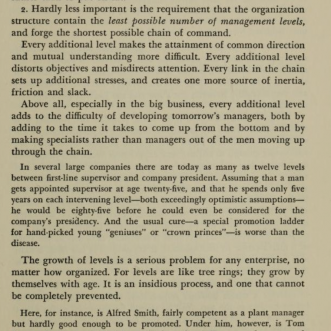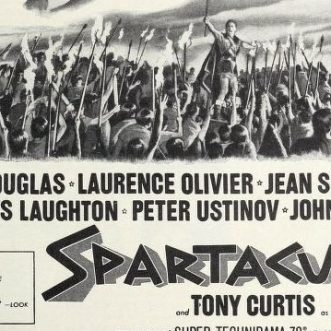
Chains
Here’s Peter Drucker talking about management chains, way back in 1954:
“Every additional level makes the attainment of common direction and mutual understanding more difficult. Every additional level distorts objectives and misdirects attention. Every link in the chain sets up additional stresses and creates one more source of inertia, friction and slack. Above all, especially in the big business, every additional level adds to the difficulty of developing tomorrow’s managers, both by adding to the time it takes to come up from the bottom and by making specialists rather than managers out of the men moving up the chain.”
There’s a good chance that these observations reflect your reasons for setting up on your own – so you could focus on the customer rather than your boss(es), and so you could have complete autonomy over how you serve those customers.
But as you grow your own business from just you to more than a few, how do you stop yourself replicating the structures you found so constricting?
Simple.
Make everyone a manager – not of other people, but of the process every business runs – making and keeping promises to the people it serves:

When everyone’s a boss, there’s no need for chains of any kind.
Thanks to Michele Zanini for the prompt.








